Cocoa Butter For Skin: Benefits, How To Use, And DIY Recipes
Don’t miss out on this natural and nourishing butter’s amazing effects on your skin.
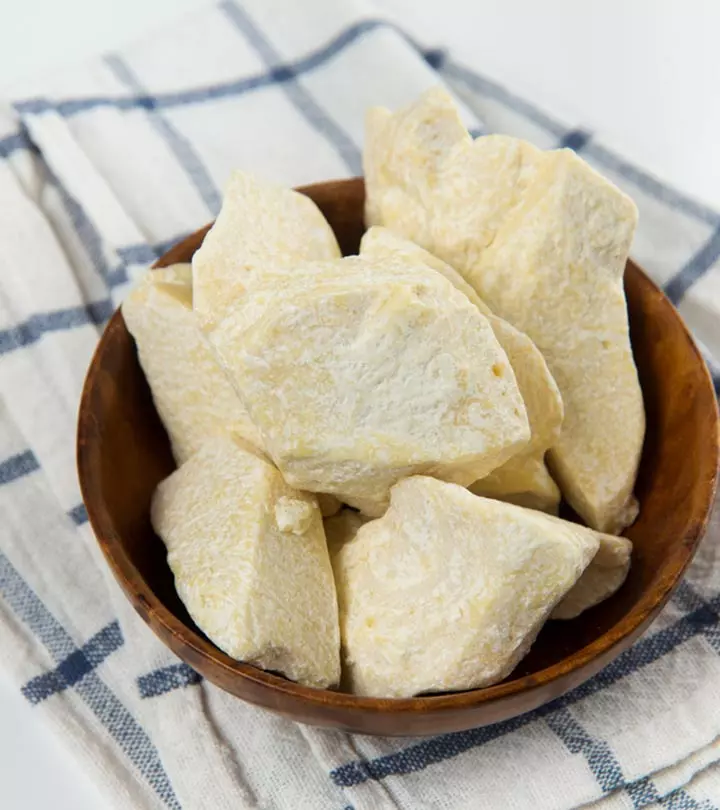
Image: Shutterstock
There are tons of commercial skin care products available on the market to combat skin care woes. However, not all of them may suit your skin type. So, if you wish to go all-natural, you may use cocoa butter for skin issues like dryness, rough texture, and flaky skin.

Though cocoa butter is widely used as a food ingredient, it has been used in medicinal and cosmetic compositions for over 3000 years (1). This article discusses the skin benefits of using cocoa butter and how to prepare easy DIY recipes with it. Read on.
 Know Your Ingredient: Cocoa Butter
Know Your Ingredient: Cocoa ButterWhat Is It?
A pale-yellow edible vegetable fat extracted from cocoa beans that has a mild aroma and chocolatey flavor.
What Are Its Benefits?
Cocoa butter fights signs of aging, moisturizes and heals damaged skin, and reduces stretch marks.
Who Can Use It?
It is especially useful for individuals with dry skin
How Often?
Once or multiple times a day, as required.
Caution
People with oily and acne-prone skin should avoid cocoa butter as it is a comedogenic, and sensitive skin people must conduct a patch test before using.
In This Article
What Is Cocoa Butter?
Cocoa butter, also called theobroma oil, is a pale yellow vegetable fat obtained from cocoa beans.
It has a mild chocolate flavor and aroma and is edible. It is a common ingredient in many confectioneries and is also a popular addition to skincare products.
It stays brittle at room temperature or lower and melts just below body temperature. It is one of the most stable natural fats available and has powerful antioxidant and anti-inflammatory properties. Cocoa butter is also a major source of many essential minerals, including magnesium, copper, potassium, and iron.
 Did You Know?
Did You Know?The topical application of this rich, creamy butter can help your skin in many ways. Check out the beauty benefits of cocoa butter for your skin.
Now, let’s look at cocoa butter’s nutritional profile in detail.
Key Takeaways
- Cocoa butter is a stable vegetable oil with powerful anti-oxidant and anti-inflammatory properties.
- Applying cocoa butter topically may moisturize skin, fight signs of aging, heal damaged skin and reduce stretch marks.
- You can use store-bought skincare products containing cocoa butter or make body creams, scrubs, lip balms, foot cream, and more using raw and unprocessed cocoa butter at home.
Cocoa Butter Nutrition Profile
Cocoa is rich in antioxidants, especially a class of compounds known as flavonoids, which help your heart by supporting healthy blood vessels, improving blood flow, and reducing inflammation (1), (2). As mentioned above, it is also a source of essential minerals. However, what you must keep in mind is that cocoa (and cocoa butter) from different regions have distinct and varying nutritional and fatty acids composition (3). Nevertheless, an average cup (100 grams) of cocoa butter usually contains (4):
| Name | Amount |
|---|---|
| Energy | 884 kcal |
| Total lipid (fat) | 100 g |
| Choline, total | 0.3 mg |
| Vitamin E (alpha-tocopherol) | 1.8 mg |
| Vitamin K (phylloquinone) | 24.7 µg |
| Saturated fatty acids | 59.7 g |
| Monounsaturated fatty acids | 32.9 g |
| Polyunsaturated fatty acids | 3 g |
Why You Should Use Cocoa Butter On Your Skin
1. May Fight Signs Of Aging

Raw cocoa butter can protect your skin from UV radiation, thereby minimizing the appearance of dark spots, wrinkles, and fine lines (1). It contains anti-inflammatory properties and also combats oxidative stress to reduce the signs of premature skin aging.
Moreover, cocoa is a rich source of polyphenolic compounds and flavonoidsi A large family of naturally occurring plant chemicals that protect against oxidative damage and prevent diseases. that can improve blood flow to the skin, thus protecting against skin aging (1).
2. Helps Moisturize Skin
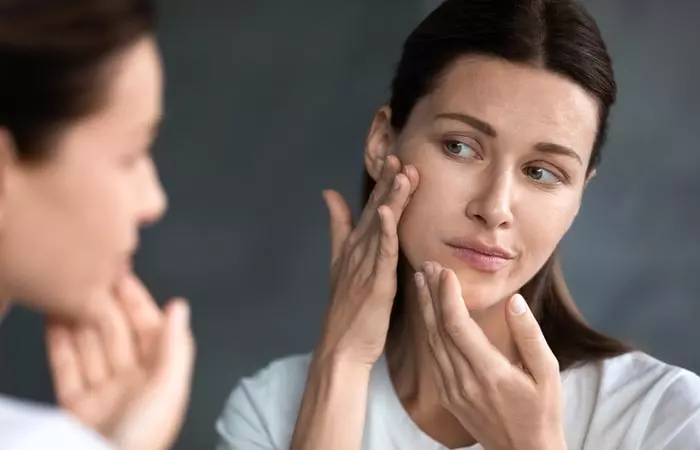
Cocoa butter is promoted in the skincare industry as a rich, moisturizing lotion that makes your skin feel smooth. It contains oleic acid, linoleic acid, and other emollients that form a protective barrier on your skin and preserve skin moisture (5). This mechanism keeps the skin soft and supple for longer.
If you have dry skin, lather your body with cocoa butter lotion right after a shower to help seal the skin moisture.
3. May Heal Damaged Skin
The phytochemicals in cocoa butter can repair skin damage and promote healing
(1). Plus, its emollient properties can replenish dry skin walls and heal the epidermis. This action may also help lighten wounds and mild scars on your body.
4. May Reduce Stretch Marks
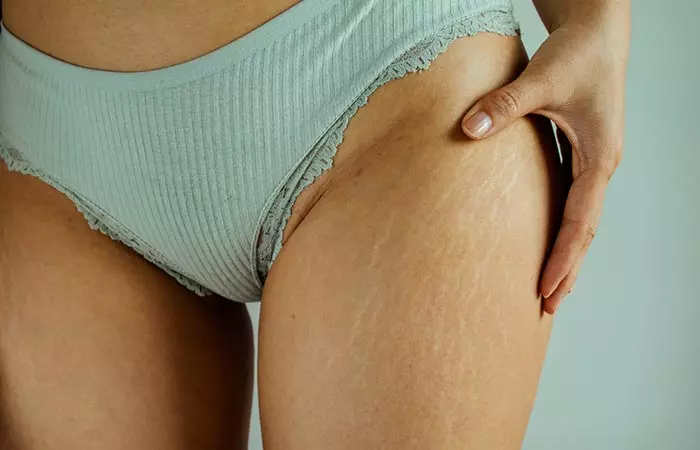
Cocoa butter is often touted as a natural remedy for stretch marks and cellulite. Having said that, there are numerous causes of stretch marks. A study revealed that around 43% to 88% of stretch marks occur during the pregnancy period, 6%-83% of people get stretch marks in puberty, and around 43% of people get visible stretch marks as a result of obesity. The study further revealed that stretch marks are more common in females than males. The polyphenolsi A naturally occurring plant micronutrient that can benefit your skin because of its antioxidant and anti-inflammatory properties. in this rich ingredient may boost skin elasticity and minimize the appearance of stretch marks (6).
Cocoa butter is a readily available ingredient that can be used on any part of your body. Find out how you can use this moisturizing product.
How To Use Cocoa Butter For Skin
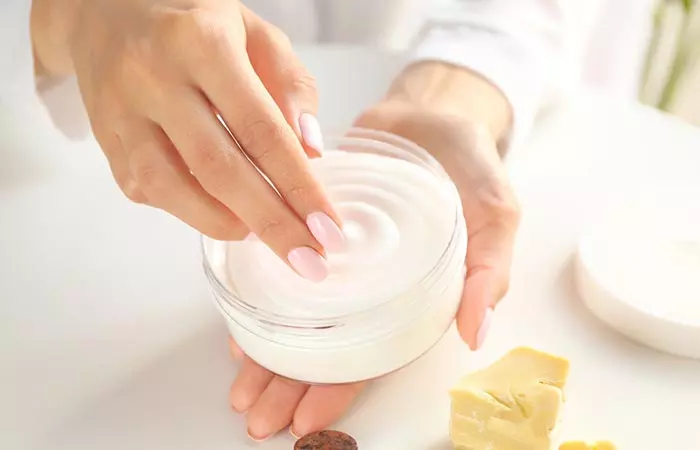
You can use a wide range of skin care products with cocoa butter, including nourishing creams, hydrating lotions, lip balms, salves, and more. If you are into DIYs, you can buy a tub or stick of pure cocoa butter to make your own creams and salves.
It is best to opt for raw and unrefined cocoa butter, as it retains many of the properties of cocoa. In contrast, the refined form is usually stripped of some of the healing properties otherwise present in the raw form.
Want to keep your skin feeling soft and youthful with homemade cocoa butter lotions, creams, scrubs, and more? Keep reading to know some easy DIY recipes.
5 Easy And Effective Cocoa Butter DIY Recipes
Cocoa butter is a favorite ingredient for those who love DIY recipes! Along with a lovely scent and moisturizing properties, the ingredient is highly versatile too. You can try these easy and effective DIY recipes.
1. Cocoa Butter Body Scrub
This rejuvenating body scrub combines the goodness of cocoa butter with the beneficial antioxidant properties of coconut oil. Coconut oil is rich in oleic, stearic, linoleic, and palmitic fatty acids (7).
You Will Need
- 1 tablespoon of cocoa butter
- 1 tablespoon of coconut oil
- 3 tablespoons of brown sugar
- 1 teaspoon of cinnamon powder (optional, for fragrance)
How To Make
- Melt the cocoa butter and coconut oil on low heat.
- Add brown sugar and cinnamon powder (if using) and mix well.
- Store in an airtight jar.
How To Use
- Wet your entire body with warm water to soften your skin.
- Apply the scrub in circular motions, starting at your feet and moving upwards towards your shoulders.
- Massage gently while scrubbing.
- Rinse thoroughly.
- Towel-dry and slather on your favorite body lotion.
 Quick Tip
Quick Tip2. Luscious Cocoa Butter Body Cream
This luxuriant body cream is rich, buttery, and smells delicious! It slides on your skin like liquid silk and makes your skin soft, supple, and plump.
You Will Need
- ½ a cup of cocoa butter
- ½ a cup of coconut oil
- 2 to 3 drops of rose/lavender essential oil (for fragrance)
How To Make
- Melt the cocoa butter and coconut oil on low heat.
- Mix them and refrigerate the mixture for five minutes or until it just begins to solidify.
- Whip the mixture with a spoon for about five minutes until it becomes soft, white, and creamy.
How To Use
- Take a warm shower and towel-dry your body.
- Take a generous amount of the body cream and apply it all over your body, especially on your legs, arms, and shoulders.
In an attempt to recreate a luscious lavender, rosemary body butter, a blogger initially melted equal parts shea butter and cocoa butter. The result, although creamy, lacked the desired fluffiness and turned oily on their skin. They then followed a friend’s recipe, opting for 2 cups of shea butter, 1 cup of coconut oil, and essential oils. The outcome was a light and creamy body butter that met their expectations. They concluded, “The proportions do matter, and using coconut oil instead of cocoa butter made a big difference in scent and texture (i).”
3. Cocoa Butter Lip Balm
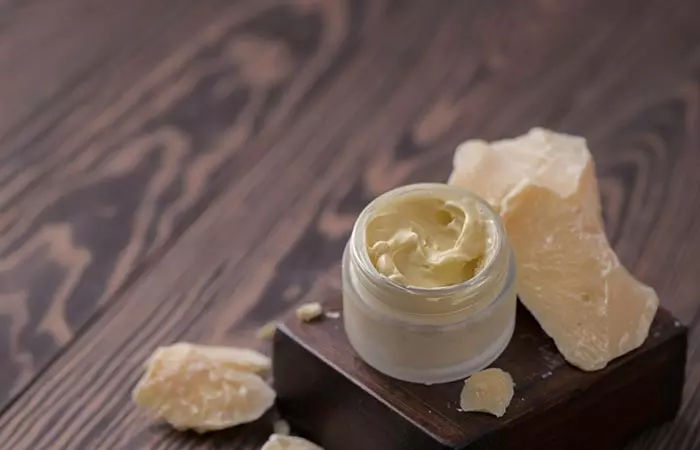
If you are looking for a lip balm that is soothing and vegan-friendly, this is the recipe for you! Sweet almond oil has emollient properties, and when mixed with cocoa butter and candelilla wax, it makes for an effective lip balm base (7).
You Will Need
- 1 tablespoon of cocoa butter
- 1 tablespoon of sweet almond oil
- ½ a teaspoon of candelilla wax
- 2 to 3 drops of peppermint essential oil (for fragrance)
How To Make
- Melt the cocoa butter and candelilla wax on low heat.
- Add sweet almond oil and peppermint essential oil and mix well.
- Pour the mixture into small tubs or lip balm tubes while still warm. It will set into a soft solid.
How To Use
- Apply generously on your lips whenever you want instant softness and nourishment.
4. Cocoa Butter Anti-Aging Overnight Cream
When it comes to fighting the signs of aging, nothing beats the efficacy of rich, natural ingredients. This cream also contains camellia japonica seed oil that is chock-full of linoleic acid, alpha-linolenic acid, stearic acid, vitamin E, and calcium. This seed oil can induce collagen synthesis in your skin (8).
You Will Need
- 2 tablespoons of cocoa butter
- 1 tablespoon of camellia seed oil
- 2 to 3 drops of rose/lavender essential oil (for fragrance)
How To Make
- Melt the cocoa butter on low heat.
- Add camellia seed oil and rose/lavender essential oil and whisk well until smooth and thick.
How To Use
- Wash your face with warm water and a gentle face wash.
- Pat your face dry. Take a small amount of the cream and apply it all over your face with your fingertips. Massage in gentle, circular motions.
5. Cocoa Butter Foot Cream
This easy DIY home remedy incorporates the healing properties of cocoa butter and jojoba oil to smooth out dry, cracked heels. Jojoba oil is rich in wax esters and helps repair damaged skin (7).
You Will Need
- 3 tablespoons of cocoa butter
- 2 tablespoons of jojoba oil
- 2 to 3 drops of peppermint essential oil (optional, for fragrance)
How To Make
- Melt the cocoa butter on low heat.
- Add jojoba oil and mix well.
- You can add a few drops of peppermint essential oil for a refreshing fragrance.
How To Use
- Wash your feet with warm water and soap.
- Towel dry.
- Apply a generous amount of the cream on both feet and massage gently.
- Do this daily before going to sleep.
 Quick Tip
Quick TipUsing cocoa butter for skin is simple. You can use it daily for effective results. But some people believe this ingredient can darken skin. How far is this true?
Does Cocoa Butter Darken Your Skin?
No, this statement has no scientific backing. Cocoa butter is a gentle, healing ingredient known to promote skin health. Anecdotal evidence suggests that it may even out your skin tone.
How Long Does Cocoa Butter Take To Work On Dark Spots?
Anecdotal evidence suggests that cocoa butter may take four to six weeks to reduce dark spots. In some cases, it may take a couple of months too.
While cocoa butter is often promoted as a magic ingredient that erases dark spots and fights hyperpigmentationi A harmless skin condition where you develop skin patches darker than the surrounding areas due to excess melanin production. , there is little scientific evidence to prove the same.
Although scientific evidence is lacking, anecdotal evidence does support the benefits of cocoa butter. It is full of emollients that hydrate and moisturize your skin and can soften and nourish your skin with consistent use. Some dark spots tend to fade with time, and regular use of cocoa butter may be attributed to this effect.
Does Cocoa Butter Have Any Side Effects?
- No. Topically applying cocoa butter on the skin is unlikely to cause any side effects.
- However, cocoa butter is comedogenic and is not recommended for those with acne-prone skin. It may clog pores and trap debris and oils, which may further worsen the condition. For acne-prone individuals, it is recommended to opt for non-comedogenic moisturizers, aloe vera gel, or lightweight oils like jojoba or squalane. The greasy cocoa butter may even cause rashes on sensitive facial skin. Thus, it is advised to run a patch test on your body before rubbing it on your face.
- Even if you do not have sensitive skin, your skin may still react differently to cocoa butter. Hence, performing a patch test is important. Get in touch with your dermatologist if you notice any breakouts, irritation, or other side effects.
Infographic: 5 Ways To Use Cocoa Butter To Improve Your Skin
Cocoa butter is versatile and does much more than just hydrating your skin. In the infographic below, we have covered the top 5 ways this moisturizing ingredient improves your skin’s health. Check it out, so you can make the most of this natural replenisher and achieve that smooth, supple skin you have always wanted.
Some thing wrong with infographic shortcode. please verify shortcode syntaxCocoa butter is a non-toxic, natural product that can be used to repair and restore the health of your skin. The skin advantages of cocoa butter are numerous! It is high in antioxidants and protects the skin from free radical damage. In addition, cocoa butter gets absorbed quickly into the skin’s top layer and helps preserve moisture on the skin’s surface, preventing dryness and chapping. If you want to use cocoa butter for skin, try a cocoa butter moisturizer or one of the simple DIY recipes discussed in the article.
Frequently Asked Questions
Which is better for skin: cocoa or shea butter?
Selecting one over the other comes down to one’s personal preference. Using products containing shea butter, cocoa butter, or both may effectively lessen skin dryness, seal moisture, improve skin health, and potentially even reduce aging signs. However, if you’re unsure which sort of butter is ideal for you, consult a dermatologist who can assist you.
Does cocoa butter help with dark circles under the eyes?
According to anecdotal evidence, cocoa butter can help minimize under-eye bags and dark circles. In addition, the butter comprises antioxidants that help reduce the puffiness and discoloration.
Is cocoa butter good for oily skin?
Cocoa butter is a thick butter that is best for dry skin. People with oily skin should avoid products that contain a lot of cocoa butter because it can clog pores and cause breakouts. As a result, people with acne-prone skin should avoid using cocoa butter.
Illustration: Cocoa Butter For Skin: Benefits, How To Use, And DIY Recipes

Image: Stable Diffusion/StyleCraze Design Team
Watch this video and learn how cocoa butter can nourish and moisturize your skin, especially in the winter when your skin feels like paper.
Personal Experience: Source
StyleCraze's articles are interwoven with authentic personal narratives that provide depth and resonance to our content. Below are the sources of the personal accounts referenced in this article.
i. Homemade Body Butterhttps://austinurbangardens.wordpress.com/2013/07/08/homemade-body-butter/
References
Articles on StyleCraze are backed by verified information from peer-reviewed and academic research papers, reputed organizations, research institutions, and medical associations to ensure accuracy and relevance. Read our editorial policy to learn more.
- Cocoa Bioactive Compounds: Significance and Potential for the Maintenance of Skin Health
https://www.ncbi.nlm.nih.gov/pmc/articles/PMC4145303/ - Dietary Flavonoids and Cardiovascular Disease: A Comprehensive Dose-Response Meta-Analysis
https://pubmed.ncbi.nlm.nih.gov/33559970/# - Nutritional composition and fatty acids profile in cocoa beans and chocolates with different geographical origin and processing conditions
https://pubmed.ncbi.nlm.nih.gov/25053037/ - Oil Cocoa butter
https://fdc.nal.usda.gov/fdc-app.html#/food-details/171421/nutrients - The Role of Moisturizers in Addressing Various Kinds of Dermatitis: A Review
https://www.ncbi.nlm.nih.gov/pmc/articles/PMC5849435/ - Cocoa polyphenols and their influence on parameters involved in ex vivo skin restructuring
https://pubmed.ncbi.nlm.nih.gov/18822039/ - Anti-Inflammatory and Skin Barrier Repair Effects of Topical Application of Some Plant Oils
https://www.ncbi.nlm.nih.gov/pmc/articles/PMC5796020/ - Skin Ageing: Natural Weapons and Strategies
https://www.ncbi.nlm.nih.gov/pmc/articles/PMC3569896/
Read full bio of Dr. Priya Gill
Read full bio of Arshiya Syeda
Read full bio of Ramona Sinha
Read full bio of Swathi E








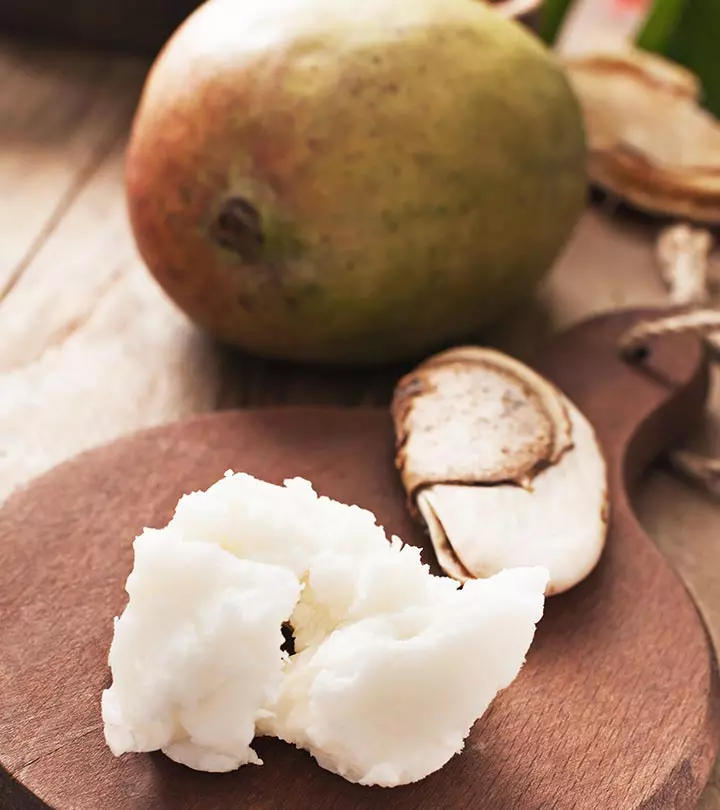


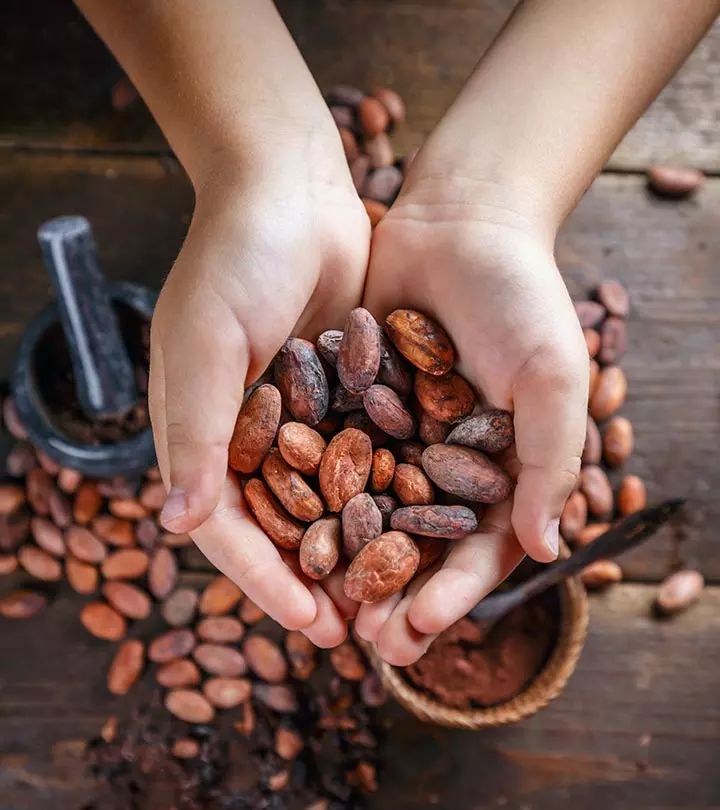

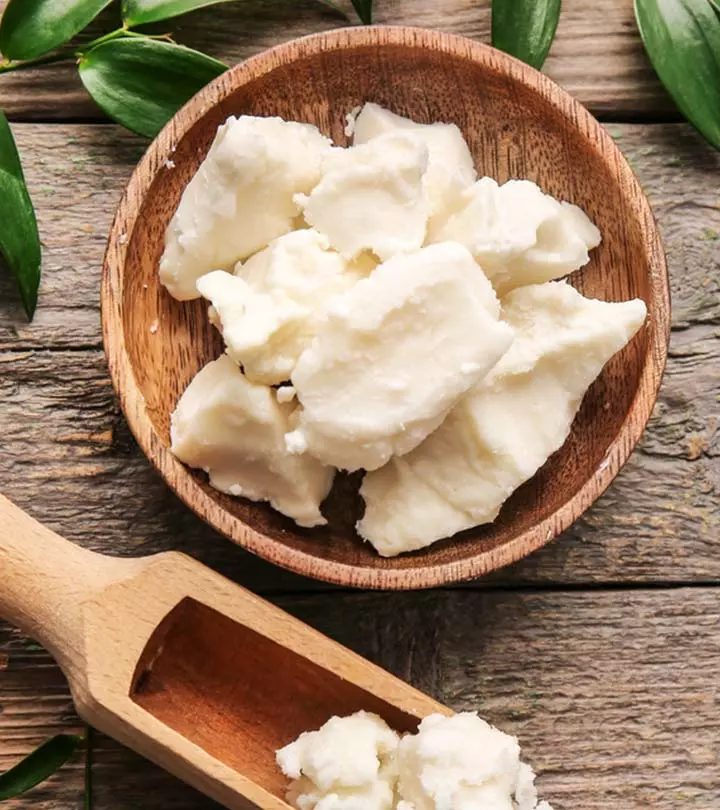
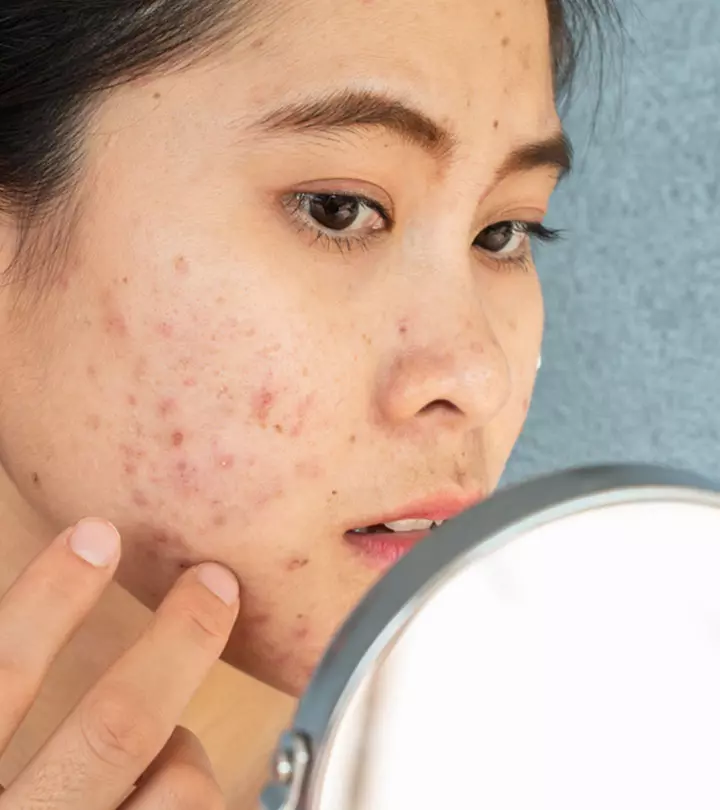

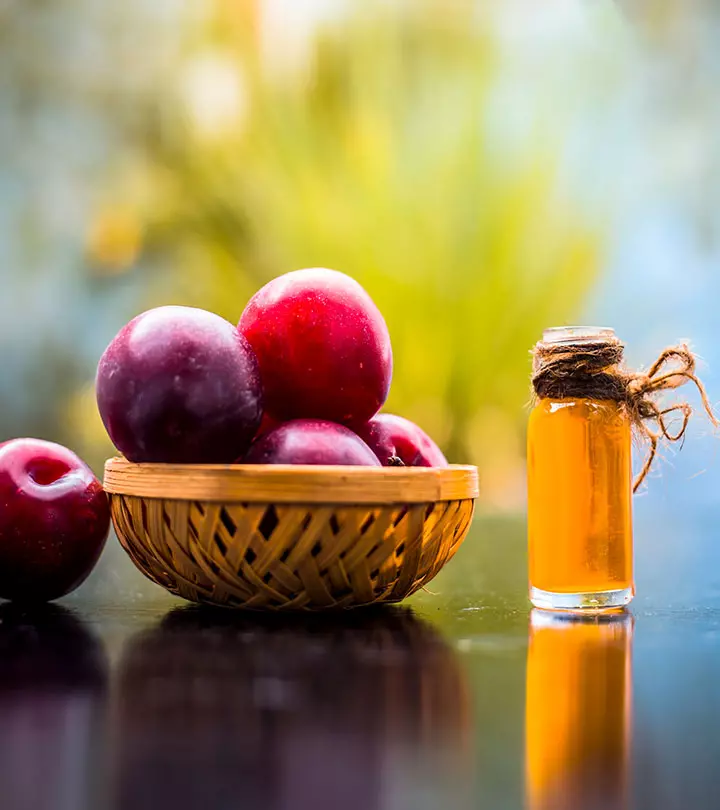

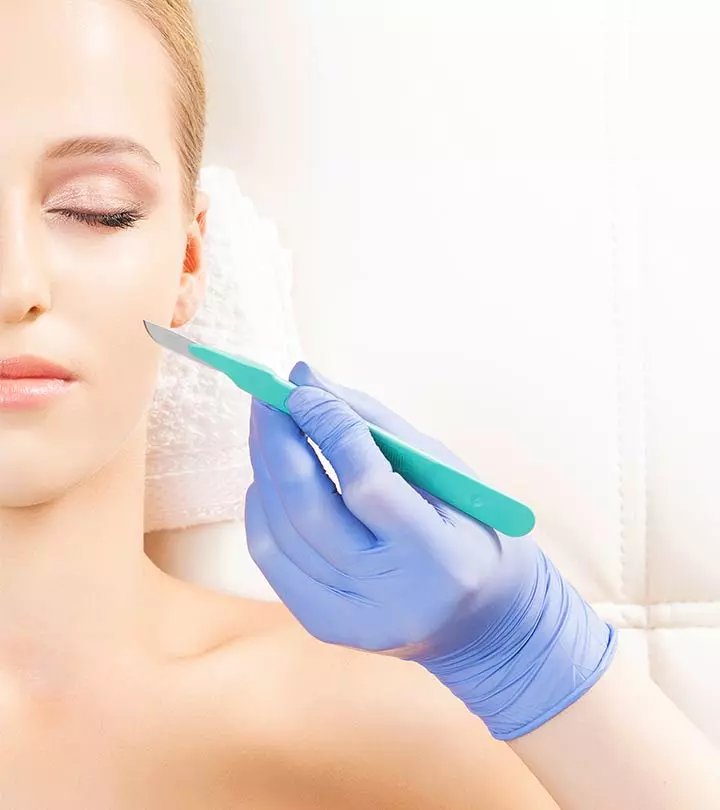

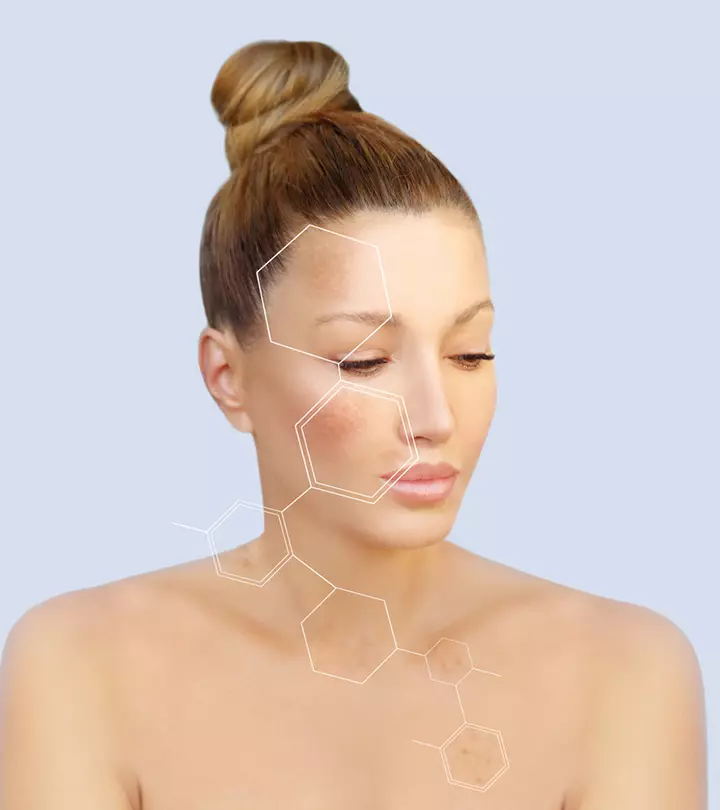
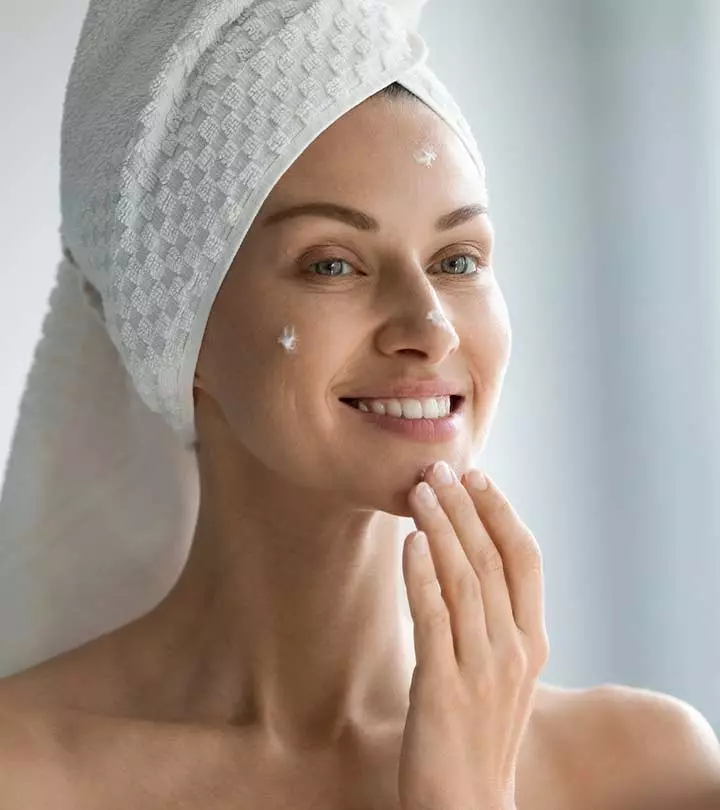

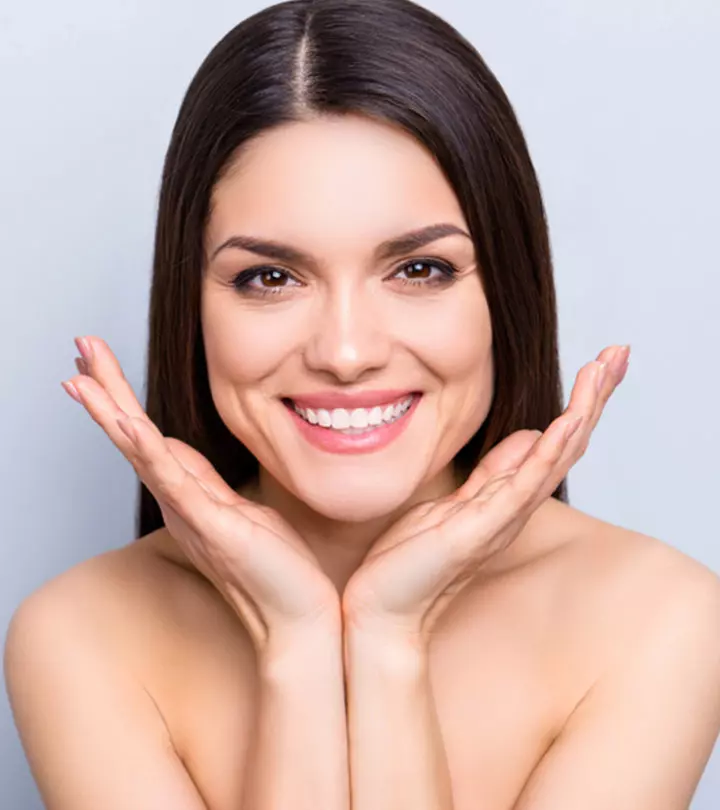
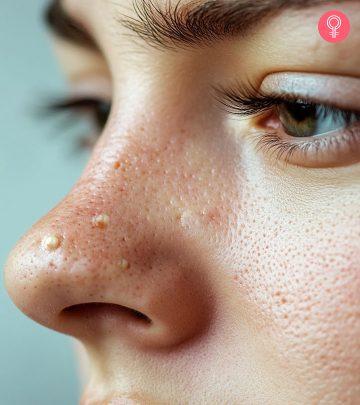
Community Experiences
Join the conversation and become a part of our empowering community! Share your stories, experiences, and insights to connect with other beauty, lifestyle, and health enthusiasts.